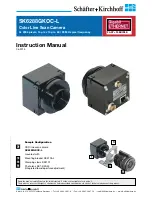
432-0010-00-12 Rev 100 — MD-Series Installation Guide
39
MD-Series Reference
Troubleshooting Tips
This section includes information that may help you with common issues that may
arise during operation of the MD-Series system.
Video not displayed on monitor
If the camera will not produce an image, check the video connection at the
camera and at the display. If the connectors appear to be properly connected but
the camera still does not produce an image, ensure that power has been properly
applied to the camera and circuit breaker is set properly. If a fuse was used, be
sure the fuse is not blown.
Check the wiring at the electrical panel. Ensure that the contacts are clean, dry
and free from corrosion. If maintenance on the wiring connection is required, have
an authorized service representative make the appropriate repairs.
If the camera still does not produce an image, contact the FLIR dealer or reseller
who provided the camera, or contact FLIR directly (contact information is provided
on the back cover of this manual).
Cleaning
If the camera lens has become smudged or dirty, clean it with low-pressure fresh
water and a soft cloth. Improper care of the camera window can cause damage to
its anti-reflective coating, degrade the camera’s performance, and void the
camera warranty.
The camera housing has a durable marine coating. Rinse the camera housing
with very low-pressure fresh water to keep it clean. If the front window of the
camera gets water spots, wipe it with a clean lens cloth folded in fourths and
dampened with fresh water.
Noisy image
A noisy image is usually attributed to a cable problem—too long or inferior
quality—or the cable is picking up electromagnetic interference (EMI) from
another device. Although coax cable has built-in losses, the longer the cable is or
the smaller the wire gauge/thickness, the more severe the losses become; and
the higher the signal frequency, the more pronounced the losses. Unfortunately
this is one of the most common and unnecessary problems that plagues video
systems in general.
Cable characteristics are determined by a number of factors such as core
material, dielectric material and shield construction, among others and must be
carefully matched to the specific application. Moreover, the transmission
characteristics of the cable will be influenced by the physical environment through
which the cable is run and the method of installation. Use only high quality cable
and ensure the cable is suitable to the marine environment.






































